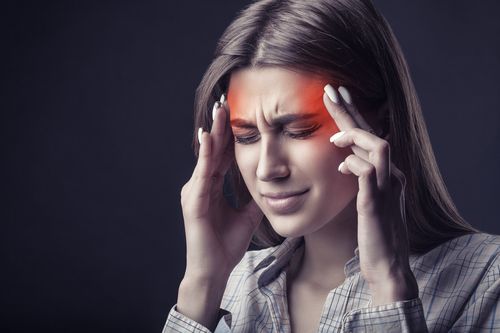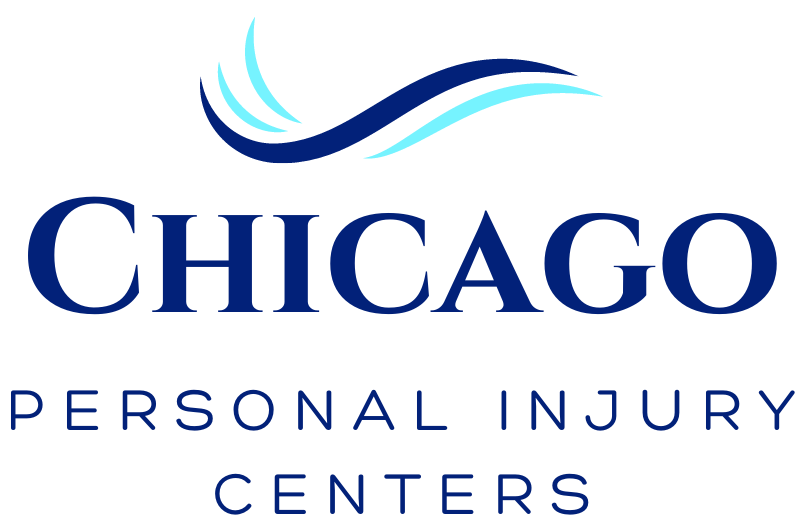Headaches and migraines are among the most prevalent and debilitating health issues affecting the American population. It is estimated that more than 39 million people in the US experience migraines, and approximately 4 million people are dealing with chronic migraines. Sadly, less than 50% of people with migraines are accurately diagnosed, and even fewer receive the necessary treatment.
Headaches and migraines can lead to a cascade of physical and emotional symptoms that can affect many aspects of an individual’s life. They can result in missed work or school days, sleep problems, and reduced ability to concentrate and perform daily tasks. In addition, one can also experience feelings of loneliness and isolation due to the reduced ability to engage in social activities or maintain regular interactions with family and friends.
At Chicago Personal Injury Centers, we are committed to providing comprehensive and specialized care and treatment to patients suffering from headaches and migraines. We utilize the latest diagnostic tools and treatment options to provide the best possible care to our patients.
If you or a loved one is suffering from a headache disorder, we can help manage the symptoms and improve your overall well-being. Give us a call today at (773) 482-5800 to schedule an appointment.
What Are the Different Types of Migraines and Headaches?
These conditions affect a significant portion of the population and can significantly impact daily life. Migraines and headaches are diverse in their manifestations, varying in intensity, duration, and accompanying symptoms. Understanding these distinct types is essential for accurate diagnosis, effective management, and targeted treatment.
From tension headaches characterized by persistent pressure to migraines with auras, signaling the onset of intense head pain and sensory disturbances, this guide aims to illuminate the unique characteristics of each type. With this knowledge, individuals can navigate their experiences, seek appropriate medical care, and adopt strategies to mitigate the impact of these often-debilitating conditions.
Migraines
There is a diverse spectrum of this neurological disorder, encompassing distinct types each presenting with its own set of symptoms and patterns, including, but not limited to:
- Migraines: A migraine is a neurological disorder characterized by re-occurring, severe, and often throbbing pain, typically on one side of the head.
- Migraines with aura: This is the most common type of migraine. Symptoms include throbbing pain on either side of the head, nausea and/or vomiting, and sensitivity to light and sound.
- Migraines without aura: This type is characterized by sensory and visual changes, such as seeing spots, zigzags, or flashes of light.
- Chronic migraine: A condition described as having a headache on at least 15 days per month, with eight of these having migraine symptoms, for at least three months.
- Menstrual migraine: This is a type of migraine linked to women’s menstrual cycle, typically occurring just before, during, or after menstruation.
Primary Headaches
A primary headache is a standalone condition characterized by head pain that is not a symptom of an underlying medical condition or disease. In essence, it is a disorder in itself rather than a result of another health issue. Primary headaches are often episodic and may vary in intensity, duration, and frequency.
- Tension-type headaches: This is the most common type of headache. It is characterized by dull, aching pain on both sides of the head.
- Chronic tension type headaches: These are tension-type headaches that occur more than 15 days per month.
- Episodic tension type headaches: These are tension-type headaches that occur sporadically and less than 15 days per month.
Other Type Headaches
Some other common types of headaches include:
- Cluster headache: Described as the most painful type of headache, cluster headaches are a rare type of headache that occur in clusters over several weeks or months, followed by periods of remission. They are characterized by extremely severe pain on one side of the head, typically around the eye.
- Sinus headache: These are headaches caused by inflammation in the sinuses. They are characterized by pain and pressure in the region around the sinuses, typically in the forehead, cheeks, and nose.
- Rebound headaches: These are headaches caused by overuse of pain relief medications.
- Cervicogenic headaches: These are headaches linked to neck issues.
- Thunderclap headache: This is a sudden and severe type of headache caused by a serious underlying condition.
What Are the Causes of Headaches and Migraines?
Headaches and migraines can have various causes. Understanding these triggers is important for proper diagnosis and treatment.
- Accidents and trauma: Head injuries, concussions, or trauma to the head or neck can trigger headaches. Mild head injuries can also lead to headaches, especially if you have a prior history of headaches.
- Stress and tension: Stress and tension are key factors that contribute to both tension-type headaches and migraines. High stress levels lead to muscle tension triggering headache episodes.
- Environmental triggers: Certain environmental factors can trigger headaches and migraines. These include bright lights, strong odors, loud noises, and changes in weather or air pressure.
- Hormonal changes: Hormonal changes, particularly fluctuations in estrogen that typically occur during menstrual periods, pregnancy, and perimenopause in women, can trigger migraine attacks.
- Neck issues: Neck pain and problems, such as cervical spine issues, can lead to cervicogenic headaches. These headaches often originate in the neck but are felt in the head.
- Spinal issues: Spinal disorders can cause headaches. For example, issues with the upper cervical spine (the region of the neck closest to the head), like spinal disc injuries can lead to cervicogenic headaches.
What Are Some of the Treatments for Migraines and Headaches?
The appropriate treatment options for migraines and headaches will vary depending on the type of headache, its underlying cause, and the specific symptoms manifested. Here are some common treatments and interventions for migraines and headaches:
Medical evaluation and diagnostic imaging
A thorough medical evaluation by a healthcare provider is crucial to determine the type of headache and its potential underlying causes. In some cases, diagnostic imaging (which includes X-rays, MRIs, and CT scans) may be necessary to diagnose structural issues.
Medication management
Our medication management involves the use of medications to either relieve the acute symptoms of a headache or to prevent the headaches from occurring. This treatment method is divided into two categories: preventive (prophylactic) treatment and acute (abortive) treatment.
Preventive treatment aims to reduce the frequency, severity, and duration of headache episodes, especially for individuals who experience frequent or chronic headaches. On the other hand, acute treatment aims to provide rapid relief from the pain and associated symptoms of a headache.
Injections
Injections are typically administered to patients who experience severe headaches that do not respond well to oral medications or other conservative treatments. Injections for headache management can be categorized into two main types based on their intended purpose: those used for treatment (acute or symptomatic relief) and those used for prevention (prophylactic or preventive treatment).
Preventive injections are administered on a regular basis to reduce the frequency, severity, and duration of headache episodes. Acute or symptomatic relief injections are used to provide rapid relief from acute headache or migraine pain when it occurs.
Chiropractic care
Chiropractors can provide care that involves the manipulation of the spine and other parts of the body to relieve pain and improve function. It is beneficial for individuals with tension-type headaches or cervicogenic headaches.
Physical therapy
This treatment option is particularly beneficial for individuals suffering from cervicogenic headaches or tension-type headaches related to musculoskeletal issues. Physical therapy involves exercises, stretches, and other techniques designed to strengthen muscles, reduce tension, and improve range of motion.
Massage therapy
Massage therapy can help relax tense muscles and alleviate headaches caused by muscle tension. It also helps to reduce stress, which can trigger migraines and headaches.
Surgical intervention
In rare cases, surgical intervention may be necessary to treat migraines and headaches. Decompression surgery can be recommended to relieve pressure on nerves or blood vessels in the head. Other procedures like occipital nerve stimulation may be considered to treat chronic and severe headache disorders that do not respond well to other treatment options.
What Should I Do if the Migraines and Headaches Are Caused By the Negligence of Another Party?
If your migraines and headaches are caused by the negligence or actions of another party, you may be able to seek compensation for your medical expenses and other damages. Here’s what you need to do:
- Seek medical attention: It is important to seek medical attention as soon as possible after a migraine or headache caused by an accident. This will help you document your injuries and establish a treatment plan.
- Contact a personal injury attorney: A personal injury attorney can help you understand your legal options and pursue compensation for your damages. They can also help you negotiate with insurance companies and represent you in court if necessary.
Get the Medical Treatment You Need Today!
While some individuals may experience occasional and manageable migraines, others may face chronic, severe, and highly debilitating attacks that significantly affect their daily lives. If you are in the second group, you need a thorough medical evaluation and an effective treatment plan to manage your condition and improve your quality of life. This is exactly what we offer you here at Chicago Personal Injury Centers.
We specialize in providing comprehensive and personalized treatment to individuals suffering from headache disorders. We have a diverse team of highly qualified medical professionals who work together to ensure the best standards of care. Contact us today at (773) 482-5800 to schedule an appointment.


